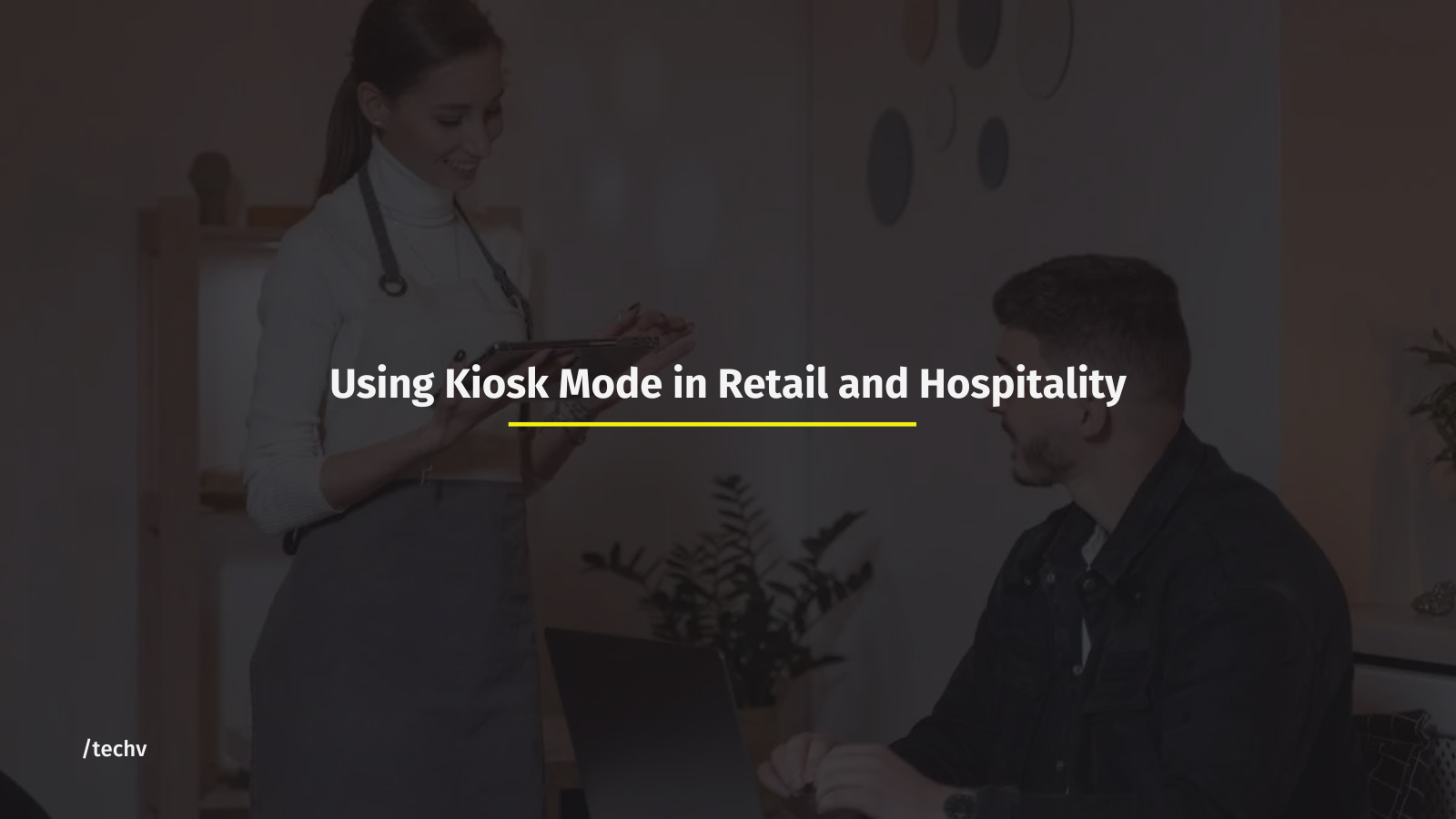Using Kiosk Mode in Retail and Hospitality: Best Practices

|
| Using Kiosk Mode in Retail and Hospitality: Best Practices |
Computer systems can be configured to limit user access to the underlying operating system or software in kiosk mode.
It is used in retail and hospitality environments to restrict consumer access to only certain applications and services. As a result, it aids in shielding private information from prying eyes!
Point-of-sale (POS) systems, digital signage, way-finding devices, and service kiosks are the most common gadgets that operate in kiosk mode.
Why is it crucial to configure kiosk mode?
Kiosk mode can aid organizations in shielding client data from cybercrime and vicious assaults when utilized in retail or hospitality contexts. This mode also restricts access to services and apps by unauthorized users.
For instance, clients can place orders and browse products in a secure environment using the kiosk mode. Customers won't need to be concerned about security risks when accessing crucial information! It also gives organizations a simple way to control and monitor customer behavior. This will result in safely monitoring data flow inside the application or service.
Additionally, kiosk mode contributes to better customer service. Customers can use the system more quickly and easily with its assistance. For instance, the kiosk mode can offer users interactive menus, instructions, or other useful information to aid decision-making. This makes it easier to guarantee that users of the application or service will have a satisfying and effective experience.
Finally, kiosk mode greatly simplifies the hardware and system health monitoring for businesses. When you set up this setup, you might find issues or places that require repair very quickly. This makes it possible to guarantee that consumer data is always secure and that the system functions without any hiccups.
Retail and Hospitality Kiosk Mode
Kiosk mode is utilized in retail and hospitality to safeguard sensitive data, maintain client privacy, and guarantee consumer safety. As a result, companies can better manage the user experience. It can stop unauthorized downloads, block access to particular websites or programs, and improve user focus.
Use just the best techniques when applying this mode to ensure you use it as effectively as possible! Some of the recommended techniques for employing kiosk mode in retail and hospitality sectors are listed below:
Implement security guidelines unique to kiosks.
Businesses may protect sensitive information from cyberattacks by establishing clear standards and protocols for handling client data. These guidelines are crucial in directing your developers and developing your security team. Establish a clear strategy for using kiosks in the workplace, including who will have access to them and when.
Make sure to cascade these policies to every employee once you have developed them. To ensure staff employees are familiar with the goals and capabilities of kiosk mode, consider putting in place a thorough training program.
Strong policies allow you to protect your data while giving your consumers access to crucial functionality.
Restrict user rights
By limiting user privileges, businesses can ensure that only authorized people have access to sensitive data or apps. The ability to configure kiosk mode for a particular purpose is one of its benefits.
For POS systems, for instance, you can grant more authority as your trusted employees will control them. In contrast, you should restrict access to any customer service or display signage that customers will handle.
Put multi-factor authentication to use.
Passwords, fingerprints, and RFID tags can all be used as authentication mechanisms to help safeguard client data from illegal access. In most use cases, businesses assign each consumer a unique password or PIN before they may access a kiosk.
Make use of software tools.
MDM (mobile device management) and kiosk management platforms are examples of software applications that can aid organizations in better managing the user experience. You won't have to physically attend to each kiosk every time it has to be updated in this way. Using remote tools is a more effective technique to ensure that your devices are operating properly and securely.
Maintained and upgrade all kiosk equipment.
Ensure that the most recent software updates and security patches are regularly applied to all kiosk devices. Additionally, you can put antivirus software on your devices to keep them safe from viruses or system hacks.
Businesses can also detect unauthorized access attempts or malicious activity by monitoring usage on all kiosk devices.
The conclusion
When used properly, kiosk mode can be a useful tool for retail and hospitality companies. Processes may be made more efficient, and customer service can be enhanced. These will result in improved operational effectiveness. Your firm will benefit from greater customer happiness, more sales, and increased profitability once you put these best practices into place!
Join the conversation